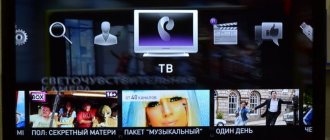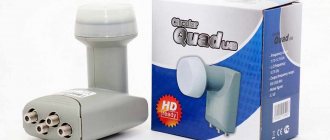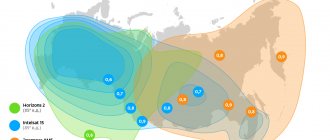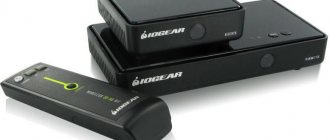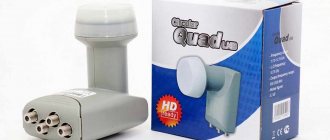What satellite does MTS have?
When connecting MTS satellite TV, you need to know which satellite the company uses for subscribers. This data will be needed for a more accurate search and subsequent setup of television or the Internet.
Name
First, let's look at which satellite MTS TV operates on. From October 18, 2017, the company transferred users to a new device called ABS-2A. It is located in the same orbit as its predecessor ABS 2, but has better parameters. Thus, ABS-2A is a geostationary-type satellite owned by the Bermudian cellular operator (Asia Broadcast Satellite).
Its function is to provide telecommunications services in Africa, Asia (south and southeast), Russia and other regions. The exact name of the MTS satellite for satellite TV is ABS-2A at 75° East. It is equipped with 48 transponders operating in the Ku-band.
Coordinates and parameters
For high-quality television setup, you need to know exactly the coordinates of the MTS TV satellite and other data. The presence of such information allows you to obtain a stable reception level for 60 or 80 cm dishes.
- Degree. When setting up, it is important to know at what degree the MTS satellite is located. In this case we are talking about 75 degrees.
- Operator: ABS Satellite.
- Range - Ku.
- Frequency - 54 MHz.
- Characteristics of FEC 5/6 and 3/4.
Knowing the parameters of the MTS TV satellite, there are much fewer difficulties in finding it. The information obtained can be used in special services or applications (we will discuss the configuration features below).
Cost of equipment
When assessing the cost of services, it is necessary to take into account not only the price of the corresponding tariff, but also the cost of the equipment. In order to take advantage of this opportunity, you need to take into account that the tariffs offered by MTS provide for the simultaneous provision of television and satellite Internet services.
In order to get the opportunity in question, you will need to buy the following (prices are in rubles):
- Special antenna (dish) (1000-3000).
- Communication cable (100-500).
- SMART card (200-1000).
- CAM module (1500-2000).
- Signal converter (1500-2000).
- Receiver (from 4000).
The indicated price ranges mean that the cost of acquisition in a particular case depends on the seller offering the product.
Why do you need to know this?
Several parameters are taken into account when determining the location. In particular, azimuth shows the angle between the direction of interest and north. It is calculated in the direction the clock hand moves. When setting, the rotation of the converter is taken into account, as well as the angle of inclination of the MTS dish itself. Another parameter is the elevation angle, which determines the angle between the direction to the satellite and the horizon. If this indicator is close to zero, the signal is not received.
Knowing the name of the MTS TV satellite and having its parameters at hand, it is easier to catch and configure the equipment for watching TV or using the Internet. The stability of the signal and its quality depend on the correctness of the available data and the clarity of the settings. In other words, knowing the location of the MTS TV satellite, you will quickly configure the necessary channels and achieve a high-quality picture. Even a slight shift left-right, up-down can lead to deterioration in signal quality or its complete loss.
What is interactive television
Interactive television, or IPTV for short, which stands for Internet Protocol Television, refers to modern types of television technologies. At the moment, almost all cellular companies, including MTS, use network technologies. They are needed for the following:
- Internet connections;
- use of IP telephony;
- IP television applications.
The service party, represented by the supplier, must provide:
- IP network that supports multicast broadcasting;
- a node that receives digital signals and controls the entire IPTV structure.
To connect to interactive TV, the user needs only one thing - an IPTV network set-top box. At the same time, this network gives the viewer the opportunity to use the following options:
- watching various programs, including live;
- work with channels, which includes the functions of recording, rewinding, saving;
- Additional services.
The user receives the full amount of processed information.
Before you connect television, you need to find out which of its types - interactive or digital - is better and how they differ from each other.
How to find a satellite?
Most of the questions are related to finding an MTS TV satellite. Despite the availability of accurate information, it is unlikely to be found by eye. As a rule, to determine the location, a special device is used, which is available to the installers. It has a high price, so there is no point in buying it for a one-time setup. If your goal is to set up satellite MTS TV yourself, you can use an available option to get the job done - an application for your phone or tablet, special services, or a more affordable device. After obtaining the exact angles, all that remains is to install the plate in its original place.
Programs
To see the direction of the satellite on the map to set up MTS TV, you can use one of the available applications. They are produced for different OS - Android and iOS. They can be downloaded from the app store completely free of charge. Let's highlight the main programs that are in greatest demand.
SatFinder
SatFinder is a popular application that the company itself offers. With its help, you can find out where the MTS TV satellite is located and perform the correct setup. There are two versions of the application available to users - for Android and iOS.
When downloading the program, you need to be careful, because against the backdrop of its popularity, many crafts have appeared. Some developers change one or two letters in the name, add symbols, and then provide the program as an already known product.
The advantage of the software is that it is free and has a simple interface. With its help, you can easily find a satellite and even select another option (if such an option is provided by the operator). To make precise adjustments, you must have a tablet or smartphone with a large display. You also need to enable the GPS function so that the software can determine the client's location.
To use the program, follow these steps:
- Download SatFinder software.
- Log in to the app and hold your phone upright.
- Wait for the system to determine the location.
- Go to the menu and indicate from which satellite MTS TV is broadcasting. In our case it is ABS-2A.
- Follow the instructions of the program, which will give you directions and help you set up MTS TV. In this case, the exact coordinates are indicated.
Yellow arrows are provided for ease of orientation. They show where you need to move the phone until it is pointed at the satellite. When the direction is correct, the arrows turn green. At the same time, a sound signal appears. The next step is to point the dish in the indicated direction and make sure the quality of the TV program display.
Dishpointer Pro
The Dishpointer Pro program is another well-known software that allows you to find a satellite and point the MTS dish at it. The principle of operation here is similar to the program discussed above, so there is no point in dwelling on this issue in more detail.
The main feature is a clearer depiction of satellites on the display. In addition, the application works well through GPS and mobile data, which increases the accuracy of the determination and allows you to work in areas where there is a poor GPS signal.
Multifeed
If the question is how to catch the MTS satellite yourself in unusual situations, the Multifeed program will help. It is suitable when installation of antennas of different shapes and sizes is required. In addition, the software is used when tuning one dish to a group of satellites at once (if necessary). During operation, only the GPS receiver is used. There is no need for a camera, which allows you to find the data source on a cameraless device.
The disadvantage of the application is the need to make a payment. In addition, the interface is quite complicated for beginners. The software has many settings and options that often confuse users.
Using the Setup Wizard
If none of the applications discussed are suitable or there are other reasons why they cannot be used, try another method - use the setup wizard. It shows less accurate results, because the location is calculated taking into account the address, and not a specific point.
Let's look at how to find an MTS TV satellite by address. The algorithm of actions is as follows:
- Go to one of the special sites that allow you to determine the position of the MTS TV transmitter. Users have many options at their disposal - geonames.ru, mapsat.ru, montazhtv.ru/karta_napravlenija_na_sputnik.php and installsat.tv/statja/napravlenie-antenny-po-karte.
- Select the MTS category or immediately indicate the name ABS-2A. Depending on the service, setup can be done via satellite or operator. Some sites offer two options at once.
- Indicate the location of the TV antenna. Some services determine the direction automatically.
- After this, the program shows the direction, indicates the azimuth (normal and magnetic), and also reflects the angle of inclination (we discussed these terms above). The elevation angle and rotation of the converter are also specified. Having this information at hand allows you to accurately select the position of the MTS TV satellite and get the clearest signal.
Setting up on the MTS website
Another way to determine a satellite for TV is to use the wizard on the official website of MTS. There is no point in providing a link, since this section is periodically moved. Finding it on the resource will not be difficult. The algorithm of actions is as follows:
- Log in to the official MTS resource (mts.ru);
- go to the Help section;
- Scroll down the page and find the heading Satellite TV;
- find and click on the line I am your client;
- in the Settings section, find the necessary link for installation and configuration, then go to it.
After completing these steps, you find yourself on the required page. Next, in the field above the map you need to enter the address. Subsequently, the system shows the parameters used to configure the MTS TV satellite.
Application of the device
The most accurate way to determine which satellite MTS TV has and where it is located is to use special equipment. Such devices are used by technicians in the process of setting up satellite television. The product emits a sound signal at the moment when the dish “looks” at the MTS TV transmitter. You can buy the device, rent it, or ask a friend if possible. To obtain accurate data, you must enter a number of parameters:
- LO Freq. 10600;
- Polarity V;
- 22K: OFF;
- Down Freq. 9750 or 11920;
- DiSEqC1.0: OFF;
- Symbol Rate 45000.
This information is enough to obtain the exact location of the satellite and fine-tune MTS TV. If the work seems difficult, the company’s specialists are ready to go to the client’s address at any time and make the necessary adjustments.
Don't worry - MTS will tell you everything! We tell you how to set up an MTS TV satellite dish yourself.
The mobile operator MTS recently launched its own satellite television, but many have already managed to appreciate the favorable conditions that the company offers. An MTS antenna costs 1,200 rubles, a set-top box with a remote control costs about 2,000, and the monthly subscription fee is 140 rubles per month - definitely an option for the budget-conscious. If you want to buy yourself a “dish,” we’ll tell you how to set up an MTS TV satellite dish yourself in order to save on installation services.
List of services
When purchasing any of the above packages, the user receives an annual subscription to the basic package. After this period, you will need to pay for the renewal of the service. The cost will be 1200 rubles per year. In addition to the basic one, which includes all federal channels, it is possible to connect additional thematic services:
- movie mood - 319 rubles;
- channels for adults – 150 rubles;
- Amedia service – 200 rubles;
- football channels of the Match holding – 380 rubles;
- channel about Russian football in high definition format Match Premier HD.
Before purchasing an MTS satellite dish
Satellite television is one of the most undemanding TV connection options for the installation location. Indeed, it can be installed almost anywhere in Russia. But there are still minor limitations to the technical connectivity. In addition, before purchasing a set of equipment, be sure to determine the type of equipment.
Check if your region is covered
The coverage area of the MTS satellite includes all regions except the Chukotka Autonomous Okrug and the Kamchatka Territory. Below on this page you will see a map where the reception area is marked in color. If your region is within the satellite coverage area, then there will be a signal.
Decide where to install the antenna
It is necessary to select a location for installing the antenna so that it “looks” at the ABS2A satellite, and there are no visible obstacles in the form of trees, walls of a neighboring house, etc. on the path from the satellite to the antenna. You can determine the direction of the antenna using the SatFinder smartphone application.
MTS satellite TV coverage map
If everything is fine, and your region is in the signal reception area, and you can easily place the antenna and point it at the desired satellite, select the equipment - antenna and receiver.
Antenna diameter
If you live in the Kaliningrad, Amur, Leningrad, Vologda, Arkhangelsk regions, Khabarovsk Territory, Primorsky Territory, the republics of Sakha, Yakutia, Komi, Karelia or Yamal-Nenets Autonomous Okrug, then you will need an antenna with a diameter of 0.9 m. For other regions of the Russian Federation, an antenna of 0.6 m is suitable.
If you purchase a complete set of MTS equipment (which already includes an antenna), you can’t go wrong: in each region only sets with the required diameter are on sale.
Set-top box or cam module
If your TV is equipped with a built-in DVB-S2 tuner, has a CI+ slot and supports HEVC channel encoding, then you can use the cam module. In other cases, a TV set-top box will do. You can check the required parameters of your TV in its technical specifications.
If you connect several TVs, a set-top box or module is required for each of them, and one antenna is enough. Also in this case, purchase a converter with a number of outputs no less than the number of connected TVs.
Advantages and disadvantages of interactive TV
The main advantage of IPTV is the transmission of a high-quality signal via the Internet and the ability to work with it as the viewer wishes. Other benefits include:
- complete independence and freedom when watching various programs;
- the signal is transmitted without any failures in a high-quality format, all that is required is access to the global network;
- the information received can be stored and processed;
- You can access the Internet and use various services, including gaming ones.
These functions are not available in other types of networks. However, with all its advantages, interactive television also has a number of disadvantages:
- high cost, a set-top box for using interactive TV costs significantly more than a digital console, you will also need to pay more money for repairs;
- the presence of broadband Internet, signal transmission requires a high-bandwidth cable, not every user can organize a transmission speed above 50 Mbit/s.
These requirements may cause the refusal of IPTV, which is why you should immediately decide which type of television is more suitable for the viewer and will satisfy all his needs.
Installation and configuration of MTS satellite antenna
A set of equipment has been purchased, a place for the dish has been determined - let's start assembling and installing the satellite dish!
Before setting up MTS satellite TV, check whether you have all the necessary equipment:
- Set-top box or cam module with a smart card for each connected TV
- Antenna Bracket for antenna (included with antenna or separately)
- Converter with the number of outputs corresponding to the number of connected TVs
- Coaxial cable
- 2°F connector
- Set of keys and screwdrivers
- Plug for connecting the cable to the TV (required in some cases)
For convenience, we recommend purchasing a complete set of MTS equipment; it already contains everything necessary for installation. However, if you wish, you can purchase a third-party antenna, converter, cable and connectors separately.
Assembly
Download the instructions and use them to assemble the antenna, choosing any convenient place for this. Carefully tighten the nuts without damaging the housing or fasteners to the bracket. There is no need to tighten the mounting to the wall bracket and the plate angle adjustment nuts. Assemble the two-piece bracket separately and do not attach it to the antenna itself. The converter can be connected to the dish now (or done when you install the antenna), but the cable will need to be connected later.
Antenna assembly video
Mounting the antenna to the wall
Before purchasing equipment, we recommended choosing a suitable location for installing the antenna using a special application. Find in this place the most flat surface for attaching the bracket. Attach the bracket, circle the mounting holes with a pencil or marker, and after drilling them, attach the bracket using dowels. Tighten the screws until the bracket is attached to the wall as firmly as possible (apply pressure to check the strength). Next, “put” the antenna on the bracket, tighten the nuts on the fasteners and adjust the angle of the mirror as vertically as possible. If you have not done this before, install the converter in the holder with its head facing the plate. Strip the cable and install F-connectors on it (detailed instructions are here). Connect the cable to the converter.
Setting the antenna and converter rotation angles
The antenna is tuned according to 3 indicators: antenna rotation, antenna tilt and converter rotation. If the converter rotation value is positive, turn it clockwise; if it is negative, turn it counterclockwise (you need to look at the converter from the antenna side).
Turn on GPS on your smartphone and launch the previously installed SatFinder application, select the ABS 2 - 75 E satellite. The program will show the direction to the satellite on Google maps and directly in the sky, using the built-in camera, and also calculate the required angles of rotation and tilt of the antenna. The program will also help guide you to adjust the antenna at the desired angles.
In addition to the SatFinder application, you can use:
- Applications Dishpointer Pro, Satellite Director, Multifeed
- Website geonames.ru
- MTS setup wizard on the main MTS website
- Special device (for example, satfinder dvs-sf 500)
When using the device, enter the following data into it: LO Freq. 10600 Down Freq. 9750 or 11920 Symbol Rate 45000 Polarity V DiSEqC1.0: OFF 22K: OFF
Checking the signal from the antenna using a set-top box
After the antenna has been securely fixed and configured, connect the other end of the cable to the MTS set-top box (the connection procedure is described below). Try to minimize the length of the cable from the satellite dish to the set-top box (if it is more than 50 m, choose the most expensive and high-quality cable). In the set-top box menu, select the “Settings” section, in it the “Antenna Settings” item. You will be shown the quality and strength levels of the signal received by your antenna. If the signal is weak, then turn the antenna left and right and up and down to achieve a stable strong signal. The angle of rotation of the converter is responsible for the quality indicator. Achieve the highest possible value on the quality scale by turning the converter. After this, secure the antenna.
Possibilities
The key feature due to which a number of clients resort to activating this service is the availability of a full-fledged archive of programs with convenient access to them from their personal account. You can access the content:
- which is offered for viewing by a telecommunications operator;
- recorded using the corresponding “Record broadcast” option. In this case, you do not need to connect additional storage devices; the system saves video to cloud services (USB flash drive support is included).
Interested? Please note the full list of options included in the modern service.


